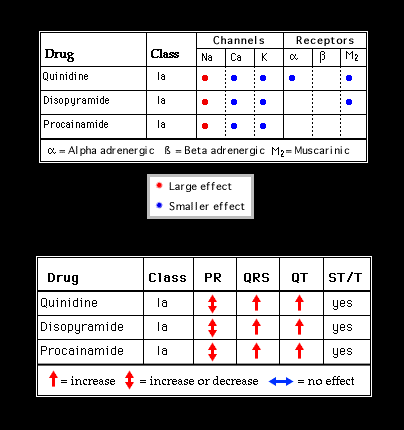
The effects of the class 1a drugs, quinidine, disopyramide and procainamide, are shown here. This group of drugs influence the calcium and potassium channels as well as the sodium channel. In addition, quinidine and disopyramide are mild blockers of the muscarinic receptors and this is responsible for a slight vagolytic effect. These multiple actions are responsible for the effects on these drugs on the electrocardiogram. The effect on the sodium channel causes widening of the QRS complex and the effect on the potassium channel causes prolongation of the QT interval and changes in the ST segment and T wave. The variable and inconsistent effects on the PR interval are explained by the multiple effects of the drugs.
